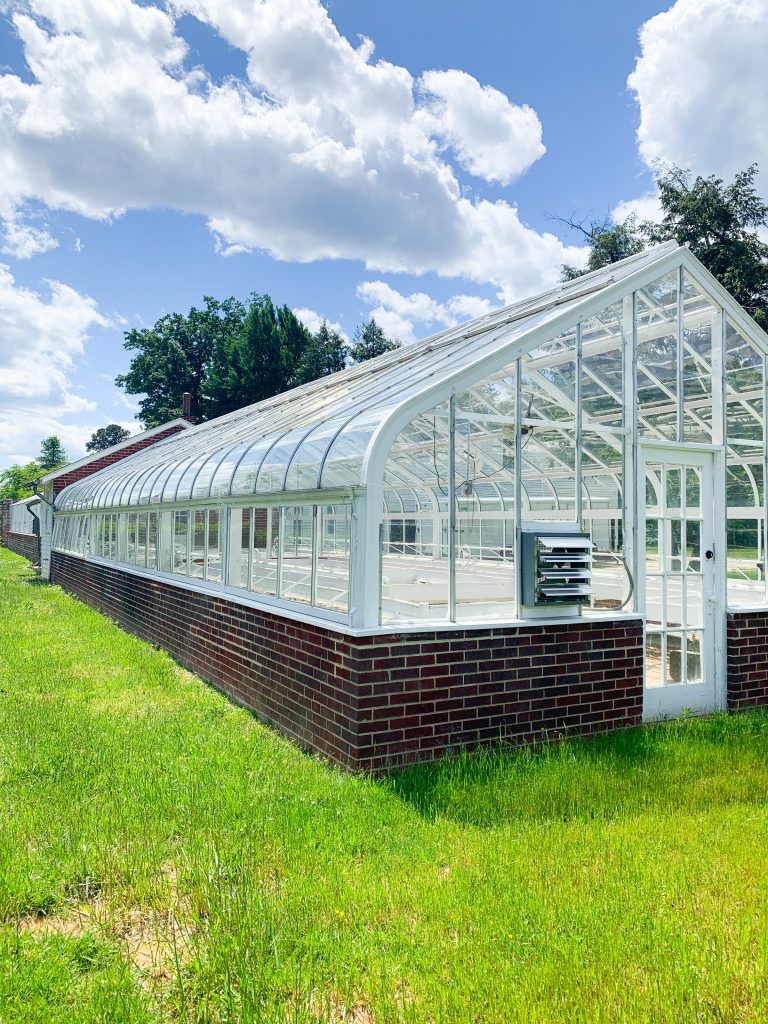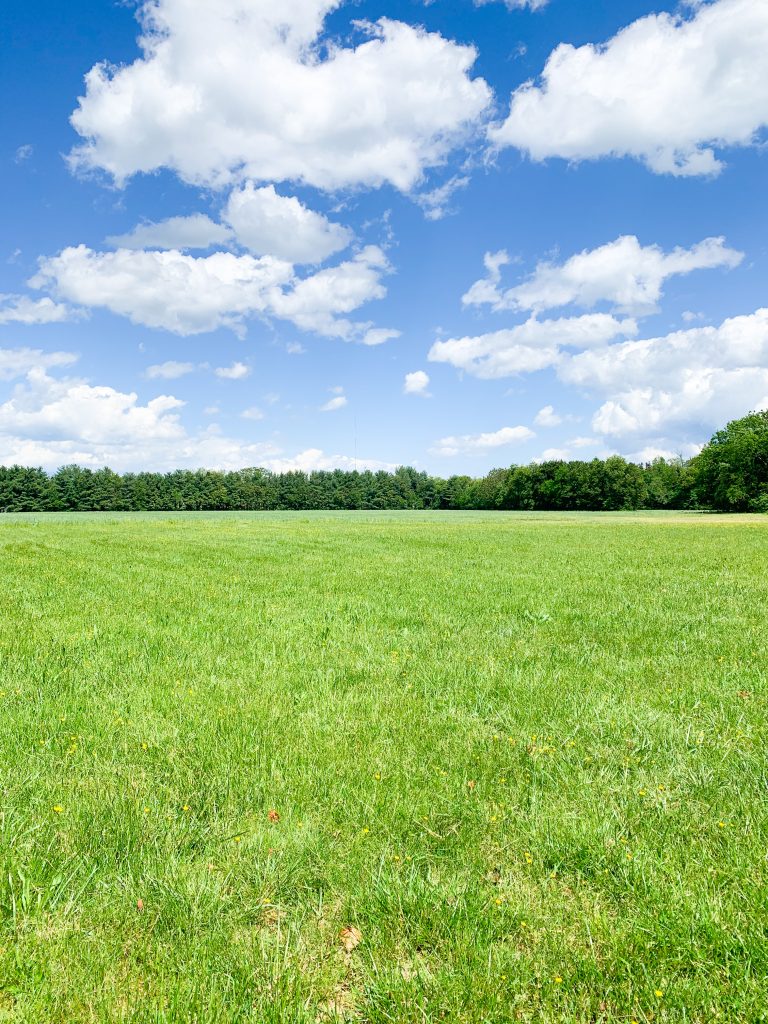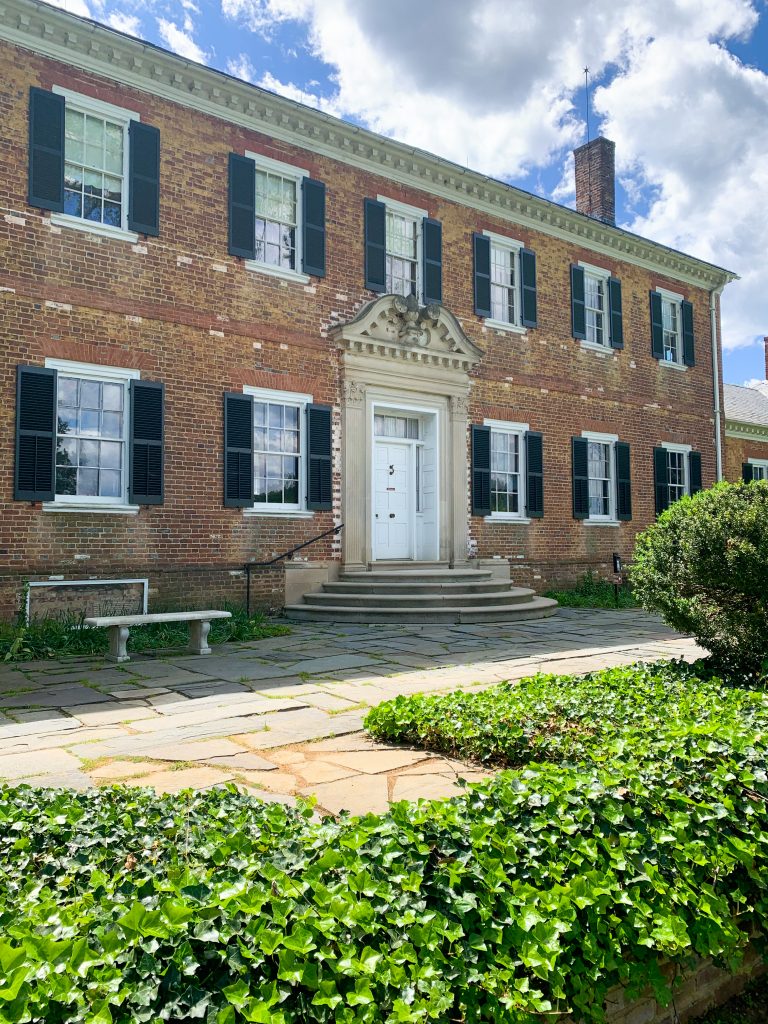An unplanned stop in Fredericksburg to escape the unbearable traffic brought us to this magnificent Georgian mansion and its equally stunning grounds! Having never heard of this place before and stumbling upon it by pure luck, I couldn’t let Aaron just drive us through the parking lot and leave. As we were pulling away, I happened to get a glimpse of some gardens, and I was hooked. The English blood in me is always drawn to a garden, so I had Aaron pull over and wait in the car with the kids, while I did a quick walkthrough the grounds of this place called Chatham Manor.
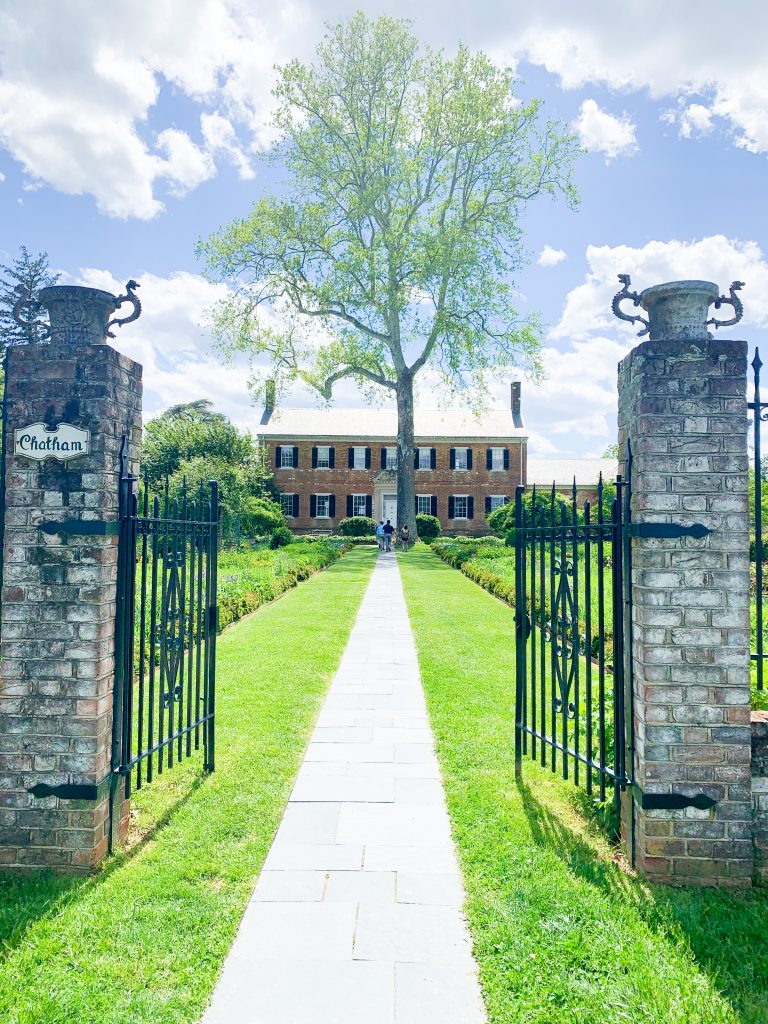
How is it that Virginia always knows how to pull me into its history, its lush green landscapes, and its absolutely stunning historic homes?! I was sad to learn that the mansion was temporarily closed but grateful to be able to walk the grounds and enjoy the gardens for a quick minute.
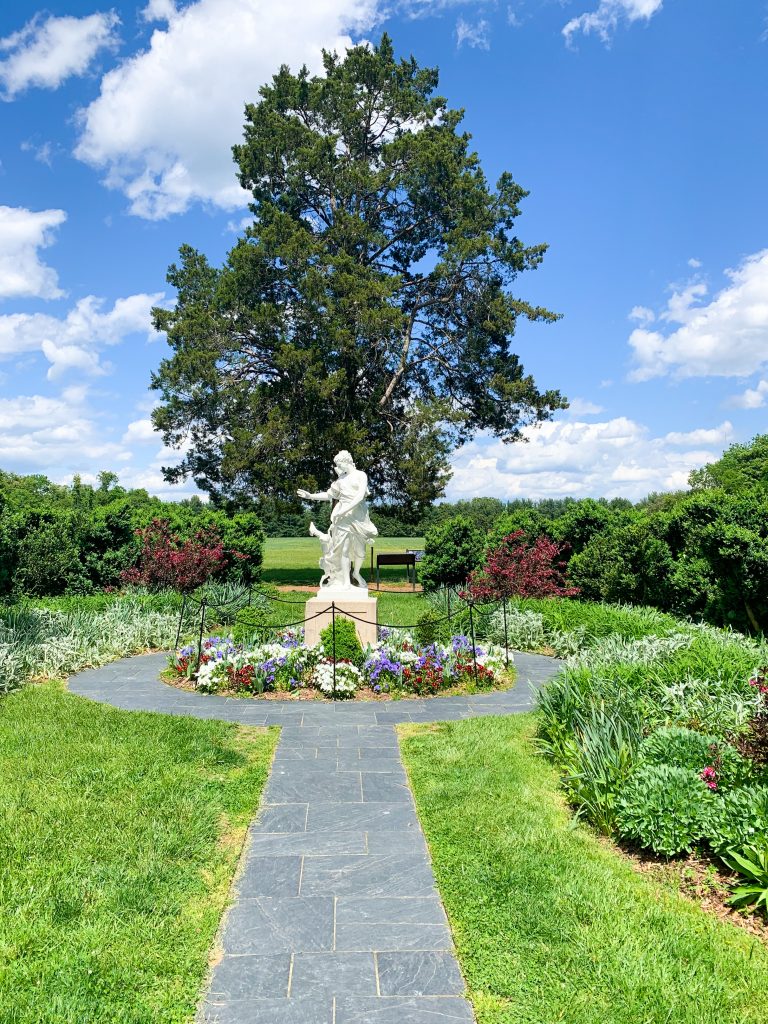
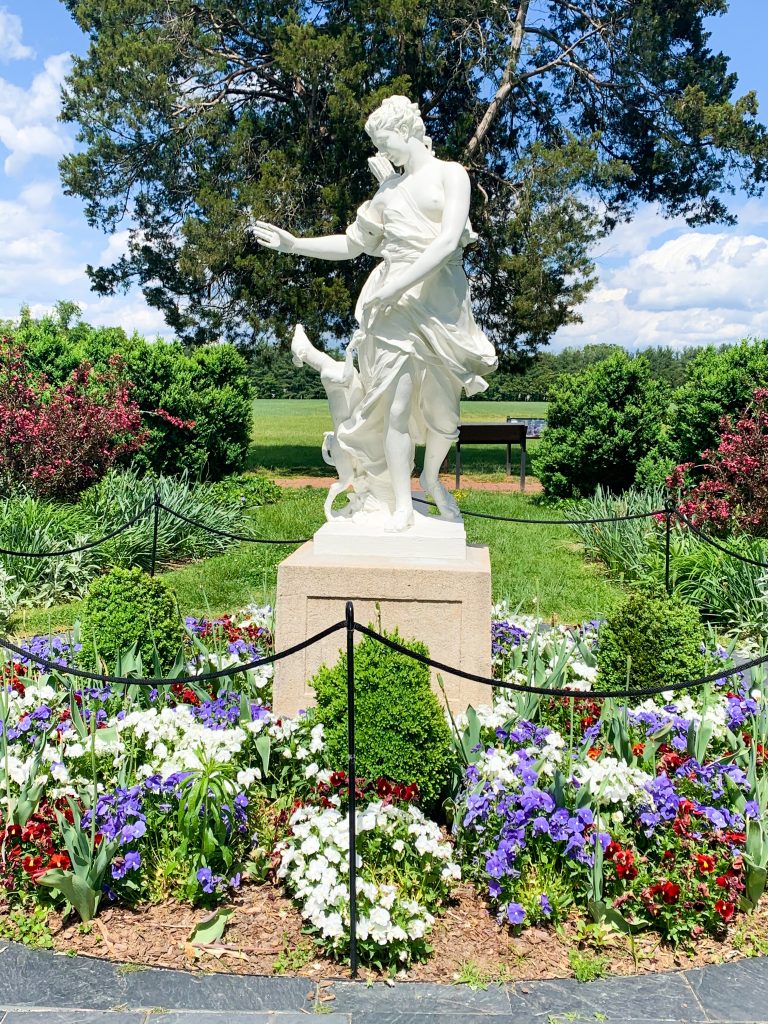
Taken from the National Park Service page, here is some history on Chatham Manor.
Chatham History
Few houses in America have witnessed as many important events and hosted as many famous people as Chatham. Built between the years 1768 and 1771 by William Fitzhugh, this grand Georgian-style house overlooking the Rappahannock River was for many years the center of a large, thriving plantation. Flanking the main house were dozens of supporting structures: a dairy, ice house, barns, stables. Down on the river was a fish hatchery, while elsewhere on the 1,280 acre estate were an orchard, mill, and a race track, where Fitzhugh’s horses vied with those of other planters for prize money. The house was named after William Pitt, the Earl of Chatham.
Fitzhugh owned upwards of one hundred slaves. Most worked as field hands or house servants, but he also exploited skilled tradesmen such as millers, carpenters, and blacksmiths. In 1805, a number of Fitzhugh’s slaves rebelled, overpowering and whipping his overseer and four others. An armed posse put down the rebellion and punished those involved. One black man was executed, two died while trying to escape, and two others were deported, perhaps to a slave colony in the Caribbean.
At the time of the slave insurrection, Fitzhugh was living in Alexandria. He had moved there in the 1790’s, in part to escape the hundreds of guests who came to Chatham each year. The expense of providing food and entertainment gnawed at the aging landowner’s pocketbook and undoubtedly contributed to his decision to move. Although the very idea caused him to “shudder,” Fitzhugh left Chatham in 1796 and put the house up for sale.
Major Churchill Jones, a former officer in the Continental Army, purchased the plantation in 1806 for 20,000 dollars. His family would own the property for the next 66 years.
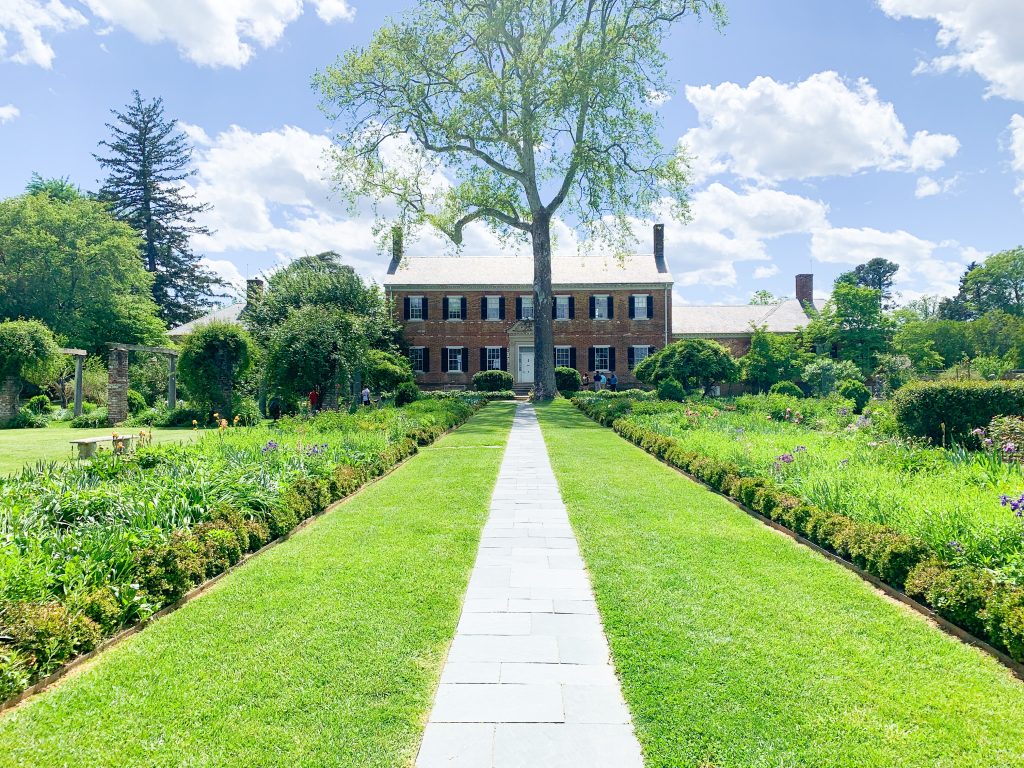
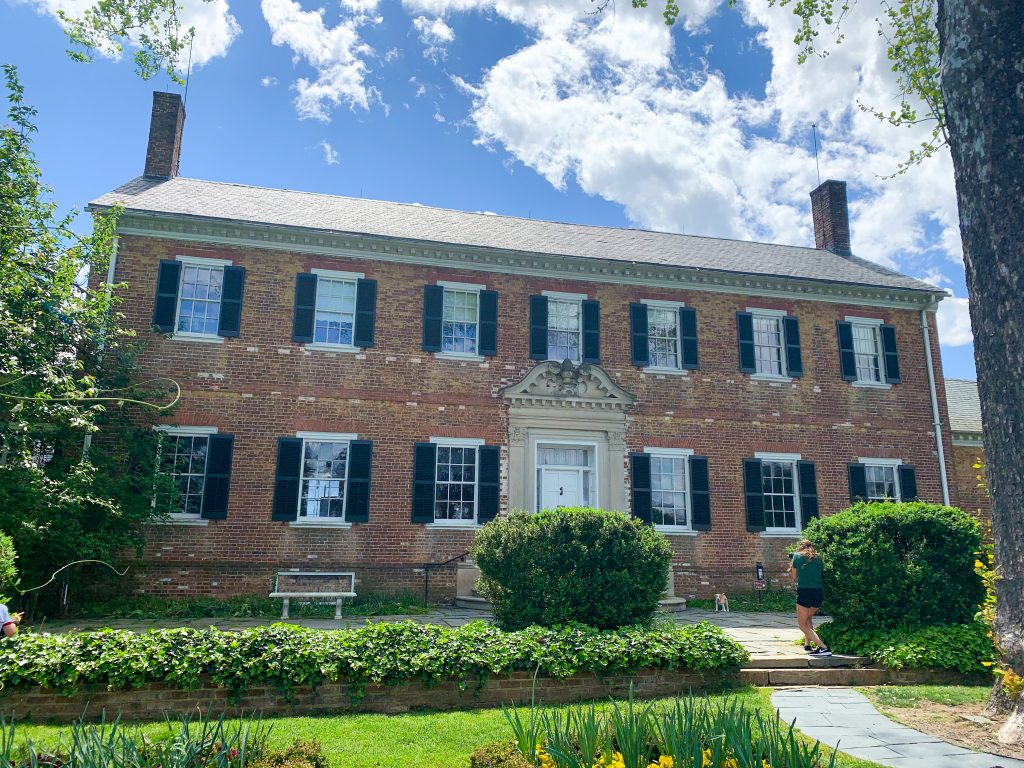
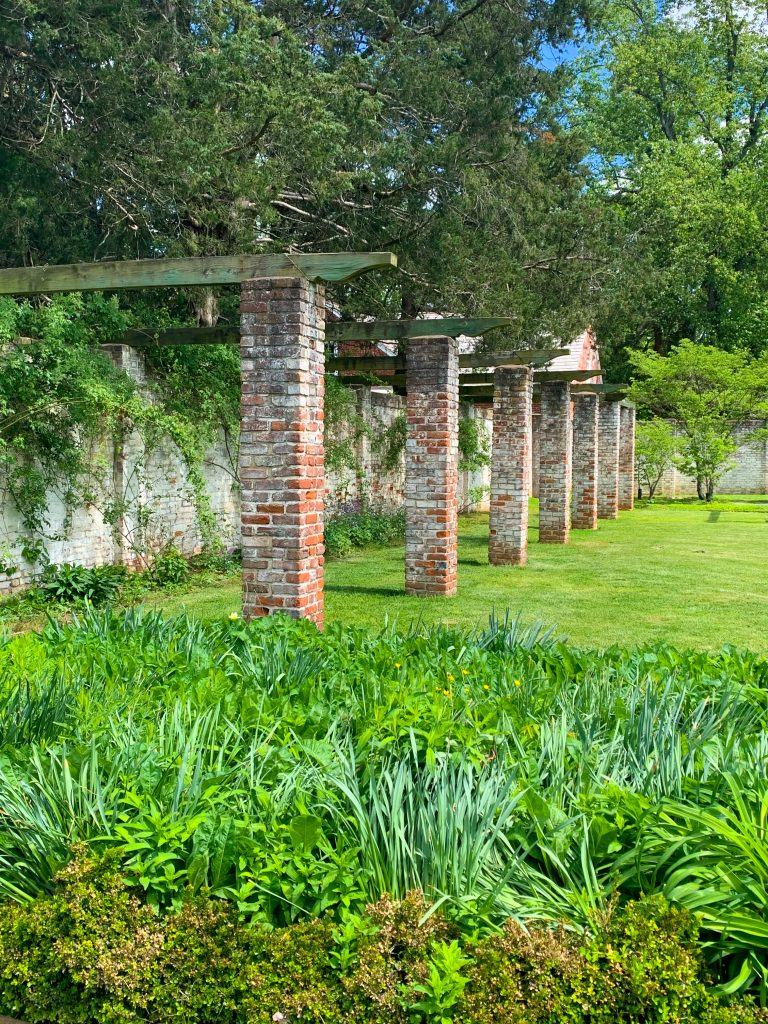
The gardens were beautifully laid out and several families were having their family pictures taken there while I wandered around. I could have stayed forever had I brought a book and a blanket!
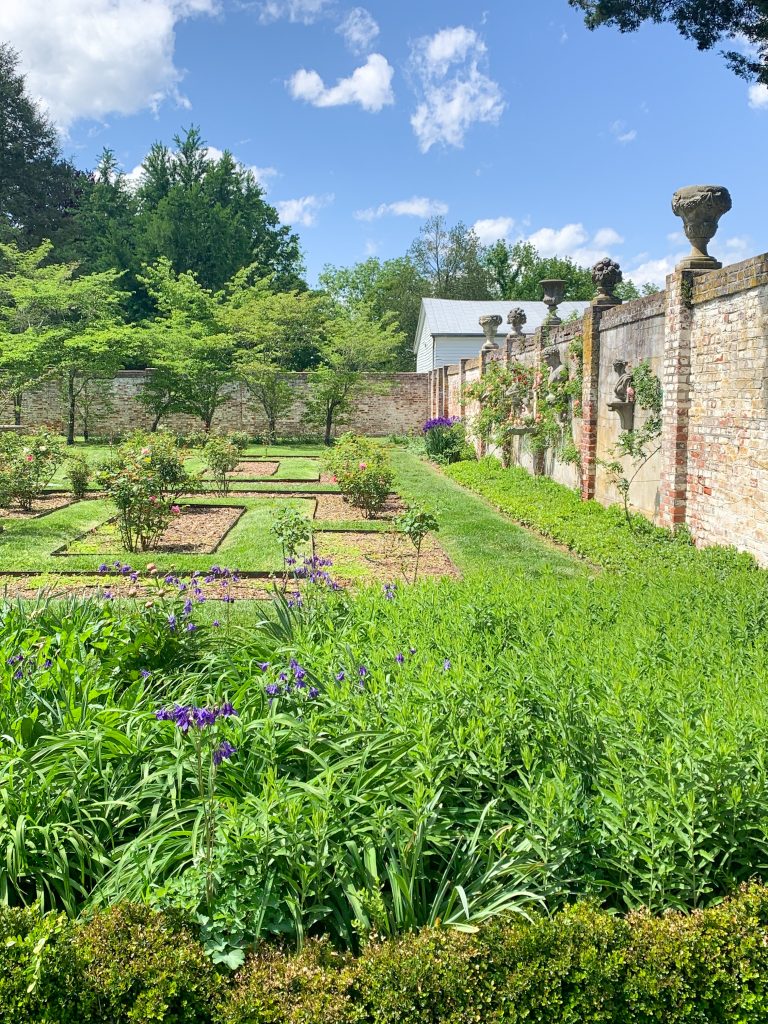
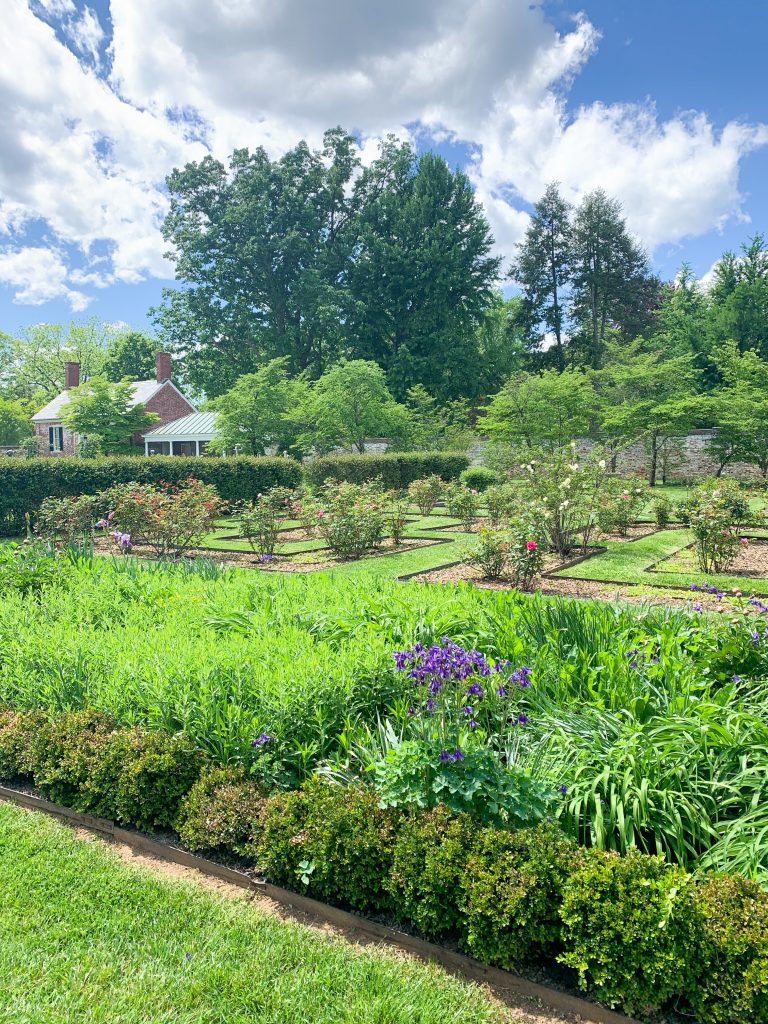
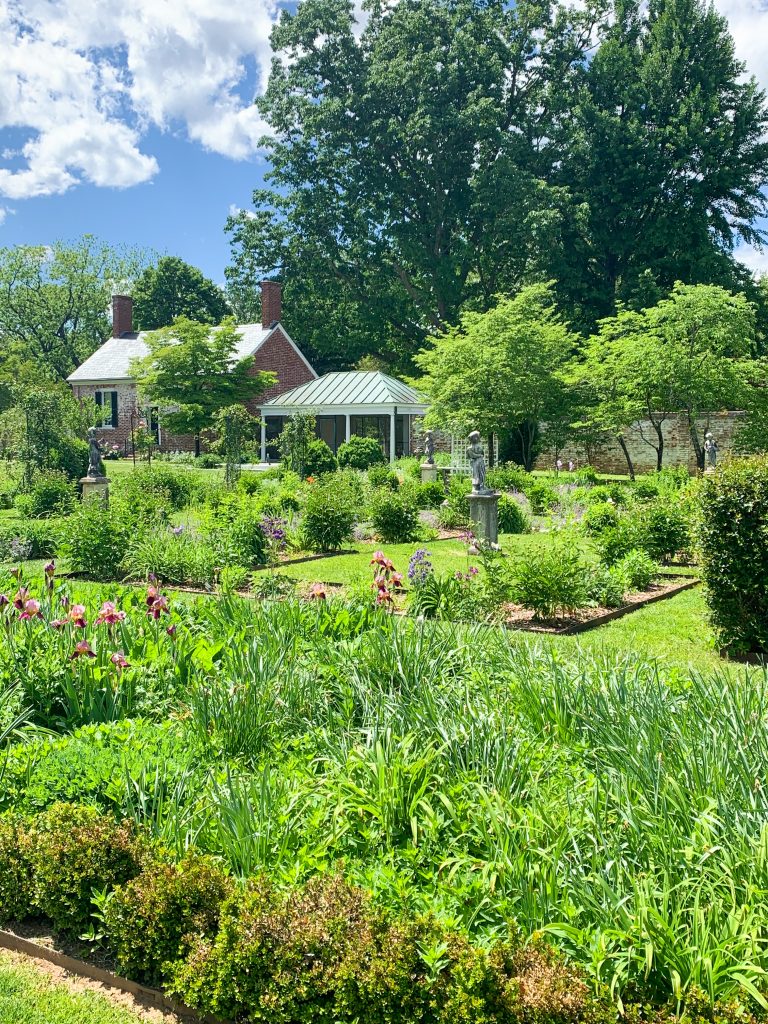
During the Civil War, Chatham Manor would be occupied by the Union Army. Before the war, it boasted several prominent and famous guests, including two US Presidents, Washington (who lived a few hundred yards away), and Thomas Jefferson, to name a few. At one point during the war, Chatham Manor was used as the headquarters for General Irvin McDowell, who oversaw the repair of Fredericksburg, Richmond, and Potomac Railroad and also the construction of bridges across the Rapahannock River. Once the work was complete and he was getting ready to march south and join the forces, President Abraham Lincoln went to Chatham Manor to visit with him about this movement.
Just a few months after that visit, there were bloody assaults on General Robert E. Lee’s Confederates, and 120,000 men descended on Fredericksburg and launched a gory and bloody battle. This resulted in turning Chatham Manor into somewhat of a Downton Abbey situation – surgeons operated tirelessly on soldier torn apart in the battles, others were brought to Chatham Manor to receive any care they could get, there were heaps of amputated limbs strewn on the grounds, and bodies of dead soldiers covered in brown blankets dotted the land surrounding the manor. In all, 130 Union soldiers died and were buried at Chatham Manor. After the war, their bodies were moved to the Fredericksburg National Cemetery.
Post war, Chatham Manor was severely destroyed! Blood stains on floors and walls, wood panels missing when the soldiers tore it off the walls to use for firewood, the forests had been cut down for fuel, the gardens had become a graveyard. After it was sold by the Lacys, and having a succession of owners who could not keep up the manor, in the 1920s it was sold to a Helen and Daniel Devore, who undertook the massive task of restoration, and helped restore it to its former glory and even better, in some ways. Chatham Manor sits on 85 acres, surrounded now by lush, beautiful gardens, and other buildings, as it would have in its heyday.
Wish I could have gone inside but it has been wonderful reading about it and having had the chance to wander briefly through its gardens, I want to go back and spend some more time really exploring!
